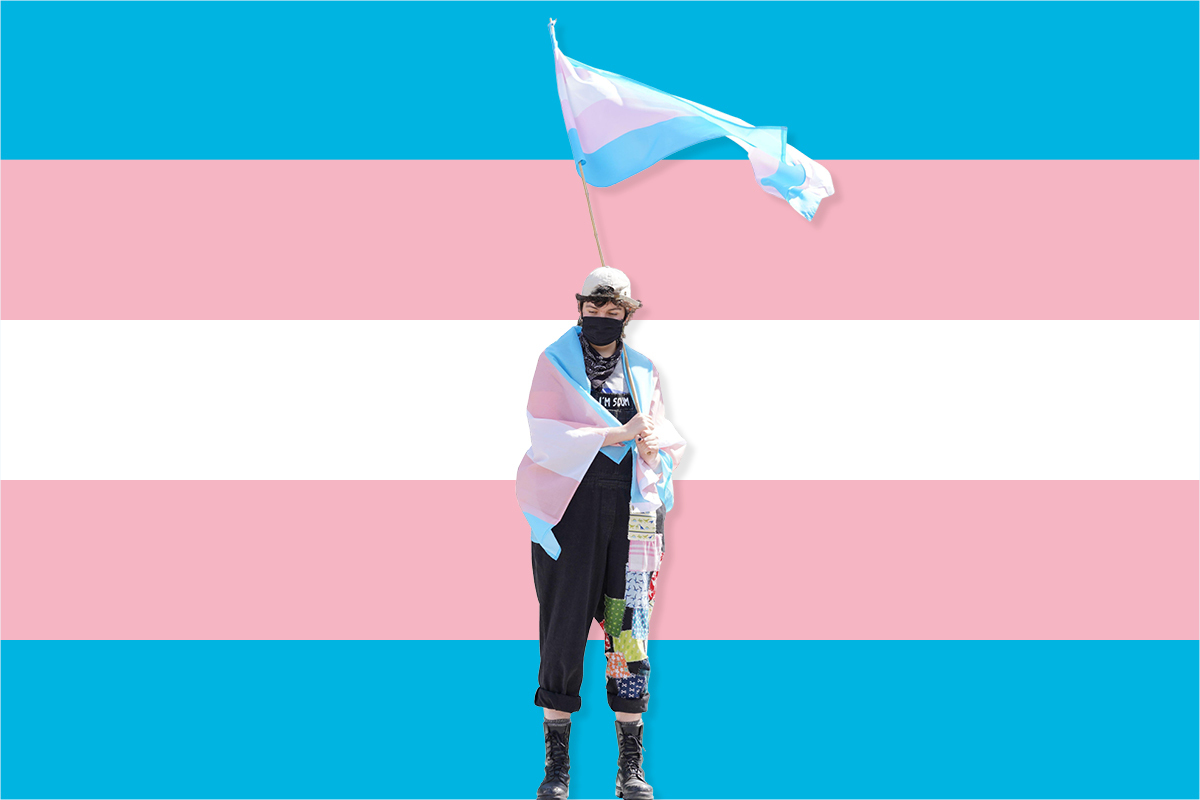You are viewing 1 of your 1 free articles

Lauren Page-Hammick, Homeless Link; and Jotepreet Bhandal, AKT
Why the housing and homelessness sector needs to do more to recognise the needs of young trans people
Many homelessness and housing organisations have been talking on social media about their support for Pride. But, Lauren Page-Hammick and Jotepreet Bhandal argue, there are concrete steps they should be taking to make sure services are accessible and welcoming to young trans people experiencing homelessness
Imagine for a second that you are a teenager, still finding your way in the world. But, rather than having stability of a safe home from which to explore who you are and what you want to do, you are facing homelessness.
Then imagine that your homelessness is not due to a landlord wanting their property back or even family financial difficulties, but down to how you identify yourself, the way you feel comfortable in your own skin.
Together Homeless Link and AKT have been working hard to better understand why young trans people might become homeless, what their experiences are, and what more housing and homelessness services can do to provide support when they do, recently producing guidance exploring this.
In AKT’s 2021 LGBTQ+ Youth Homelessness Report, two-thirds of young trans people said they were stopped from expressing their identity by their family, while nearly three-quarters who have experienced homelessness said that their family members “repeatedly belittled them” before they became homeless.
Experiences of family rejection and abuse means that it is all the more important that when young trans people do approach for support, services recognise them properly and respect their identities.
But a recent survey of 89 housing associations and local authorities by AKT found that nearly one in five organisations who responded don’t reference LGBTQ+ homelessness or youth homelessness in their policies and procedures. At the same time, nearly half of respondents said they had not received training on LGBTQ+ inclusion or homelessness.
“Adopting visual cues, such as the Pride colours, can indicate to someone that a space is inclusive, as can challenging transphobic or homophobic remarks from other staff, services, or people accessing the service”
Therefore, it’s no wonder young trans people often report gender policing when trying to access housing and homelessness services, with this experience often leading them to sleep rough, return home where they aren’t safe or fall into hidden homelessness.
As one young person who provided insight for our guidance said: “Being trans is such a taboo within housing associations, within housing units and local authorities. There’s such a gap between housing officers and the people who walk through the door.”
So, what more can services do to create spaces that young trans people feel comfortable accessing? Research on creating psychologically informed environments shows the importance of physical surroundings in people’s ability to engage with others. Adopting visual cues, such as the Pride colours, can indicate to someone that a space is inclusive, as can challenging transphobic or homophobic remarks from other staff, services, or people accessing the service.
Services should also always ask someone their preferred pronouns when they first meet them, rather than assuming based on appearance. Young people have told us this helps them feel safe and heard, and affirms their identity. If staff make a mistake at any point, it’s important to recognise this and apologise.
“Many organisations will talk about the importance of Pride month on social media, but the key to long-lasting change for young trans people is putting this awareness into practice”
Disclosing their gender identity may be a big step for a young person, and it is important to respect this. Asking young people how they would like their information to be shared and sticking to their wishes is important. As is understanding what other services young trans people may need to access and the processes to do so. For example, NHS gender identity clinics operate in different ways in different locations.
But to do the above, frontline staff need to have the right skills and confidence to provide meaningful support. We would suggest that organisations consider an audit of their services to understand how they could be more inclusive and what improvement is needed. Investing in specific training where needed and building relationships with LGBTQ+ organisations will help with this journey.
Many organisations will talk about the importance of Pride month on social media, but the key to long-lasting change for young trans people is putting this awareness into practice. Taking the time to properly recognise a young person’s identity and advocating on their behalf – alongside knowing the landscape of support – will go a long way to making young trans people feel comfortable accessing housing and homelessness support.
Lauren Page-Hammick, innovation and good practice manager for youth homelessness, Homeless Link; and Jotepreet Bhandal, campaigns, policy and research lead, AKT
Sign up for our homelessness bulletin
Already have an account? Click here to manage your newsletters












